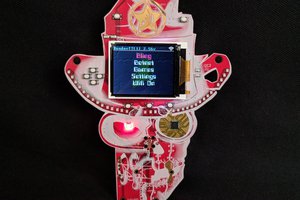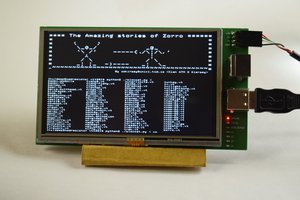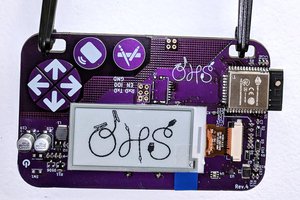Get the repository containing the hardware design needed for manufacturing and the software framework at https://gitlab.com/fschuetz/bcd-0o27/. Make sure to clone the repository with all its submodules.
Detailed documentation can be found in the git repository. The schematics, pcb design the framework for developing your own firmware as well as an example firmware is provided. Make sure to check the documentation directory for instructions.
As this is an ongoing project, more information will be added in due time. This was the official badge for the BalCCon 2k23 security conference in Novi Sad and it will be used and enhanced in the future. So easiest to get a badge is to visit the conference and order yours - or order online once the organisers offer this. However, everything is provided here, so you can build and assemble your own hardware (without the conference logo, so a little less style ;-)).
When checking out the example firmware or developing your own firmware please note that currently there is a bug in the serial console code. When you connect your computer to your badge using a serial cable and opening a serial connection (preferably with syncterm (http://syncterm.net) or minicom (https://salsa.debian.org/minicom-team/minicom) or another ansi capable terminal), the terminal might not be properly recognised if the cyberdeck already started up. If you don't get a prompt, leave everything connected and reset the cyberdeck by pushing the reset button (left button between battery holder and display).
WiFi configuration must be done through the console in the example firmware. Type wificfg help for instructions. (or be brave and just do wificfg add ssid pass, then wificfg connect - but keep in mind you can store the configuration and then quickconnect using wificfg lsc id, where id is the slot you stored the configuration in).
Also, there is a case in the files section (not the repository yet) that can be 3d printed and used (hiding the nice pcb, but diffusing the leds). When you use the case, you need to use other buttons for the badge. Use the same brand (see BOM), but higher ones.
Contributions are highly welcome. Whether this is improving the framework or contributing interesting modules or console commands. Just contact me if you have questions.
A special thank you to honey the codewitch, who develops the htcw gfx library (https://github.com/codewitch-honey-crisis/gfx) and was super helpful for getting some bugs fixed and giving some advice. Further thanks goes to the developers of libssh2 (https://libssh2.org/), and linenoise (https://github.com/antirez/linenoise). And of course the people behind espidf and the people behind FreeRTOS.
Last but not least I would like to thank Jelena and Mladen for their support in spinning around ideas and reviewing the electronics design and the example framework implementation. And Voja for helping troubleshooting a strange effect that would lead to the TP5000 overheating with my psu design - even though we never found the reason and I redesigned it to avoid the problem.
 Florian Schuetz
Florian Schuetz
 dariocose
dariocose
 Zapp
Zapp
 Kuldeep Singh Dhaka
Kuldeep Singh Dhaka
 oshpark
oshpark